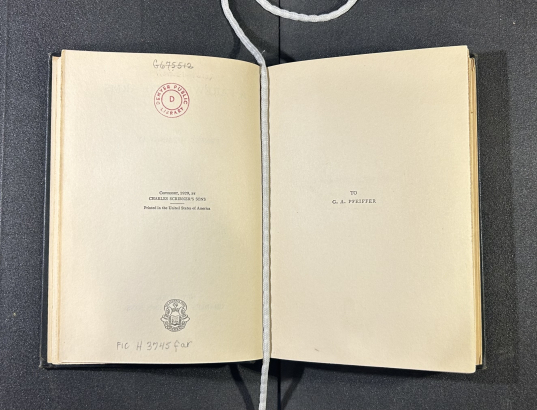On January 1, 2025, any work published with a copyright notice in the United States in 1929 enters the public domain. Many notable works have been entering the public domain after a 20-year pause beginning in 1999. In recent years, works like The Great Gatsby by F. Scott Fitzgerald and Disney’s Steamboat Willie have famously entered the public domain.
What is public domain, and why is it important? Public domain simply means that a work is no longer subject to copyright and is available to the public as a whole. The work is free to be copied in its entirety, reused, adapted, or distributed. The public domain is like a sandbox of works the public can use to play and create. Many of our favorite works come out of works already in the public domain. Notably, one of the best adult novels of 2024, James by Percival Everett, is only possible because Adventures of Huckleberry Finn by Mark Twain is in the public domain. (Come by to see our early editions of the classic!) Characters, ideas, settings, and plot can be used to create a compelling new story.
An exciting list of works are entering the public domain in 2025. Included are the Marx Brothers film The Cocoanuts, Alfred Hitchcock's first sound film Blackmail, and the English translation of Erich Maria Remarque’s novel All Quiet on the Western Front. Sound recordings have a different copyright schedule, and recordings made in 1924 will enter the public domain, including the first sound recording of George Gershwin’s Rhapsody in Blue.
Here in Special Collections and Archives, we are concerned with the copyright surrounding both published and unpublished works. Unpublished works in which the creator died before 1955 will be in the public domain at the beginning of 2025. For unpublished works created by a company, the copyright does not expire until 120 years after the work was created. For many of these unpublished works though, the copyright was transferred to Special Collections and Archives when the physical collection was donated.
Most excitingly for SCA, the novel, A Farewell to Arms by Ernest Hemingway (FIC H3745far 1929), enters the public domain. In our rare books collection, we have a first trade edition of the novel. There are a few clues letting us know exactly what edition the book is, and therefore, when it was printed. Our copy of the book is missing its dust jacket, but if it was still intact, we would have found the novel’s character “Catherine Barkley” misspelled as "Katherine Barclay.” Every edition after the first also contains this legal disclaimer: "None of the characters in this book is a living person, nor are the units or military organizations mentioned actual units or organizations. -E. H." Apparently the disclaimer did not make it to the printer in time to be included in the first edition.
After 95 years (or 100, in the case of sound recordings), some works continue to stand the test of time. Check out some of the works entering the public domain from the library, or come into Special Collections and Archives to see A Farewell to Arms yourself. Perhaps you will find yourself inspired to create something new.



Comments
Can an estate owning…
Can an estate owning copyright to an author's work renew the US copyright thus extending the protection of copyright for 96 year period?
Hi! I don't believe there…
Hi! I don't believe there are any works at the moment that can have their copyright renewed in the US. The copyright renewal system is no longer in place. Copyright surrounding a specific work can often be incredibly though. Thank you for your interest!
Add new comment